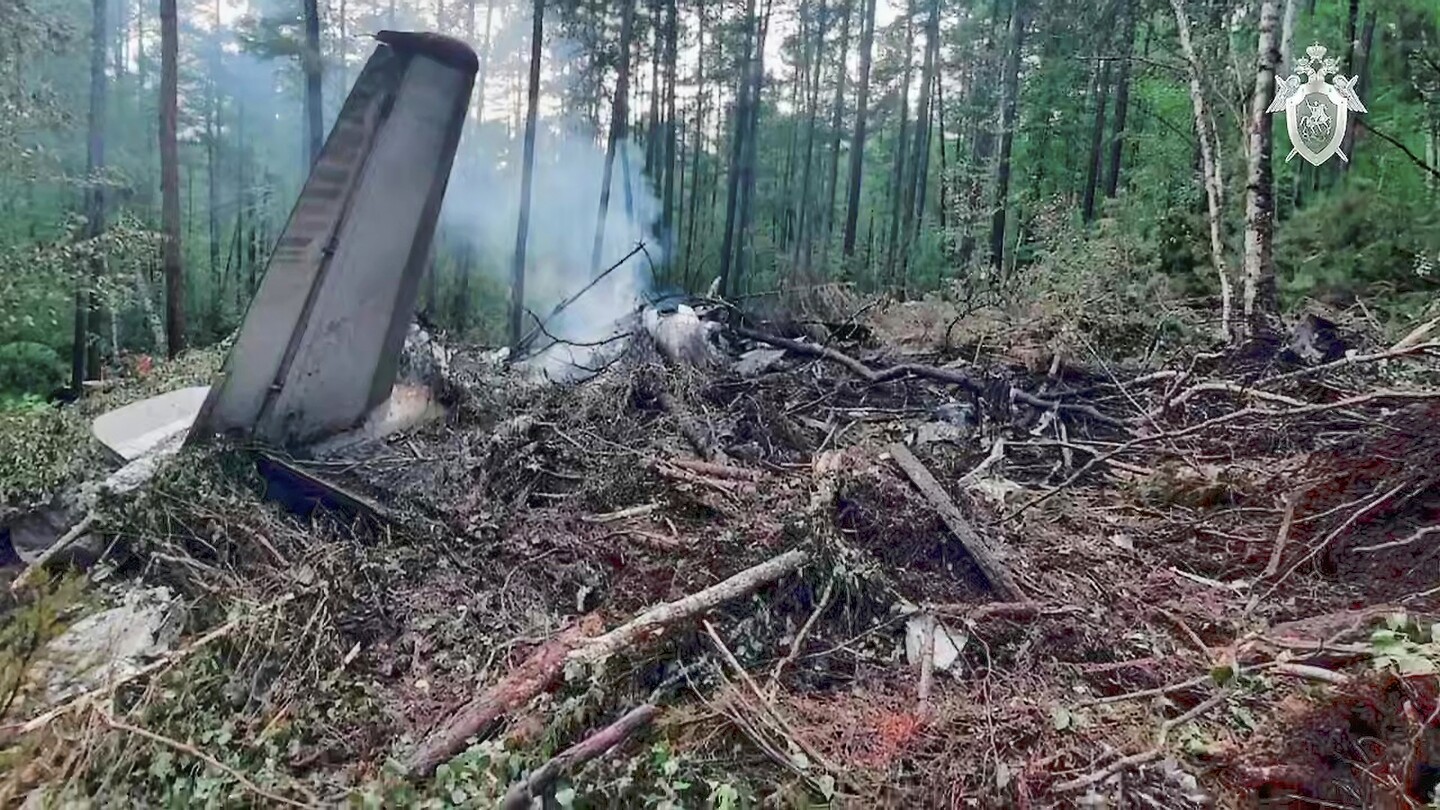Russia Plane Crash 2025: 49 Dead in Tynda, Aviation Safety Under Scrutiny
By: Javid Amin | 24 July 2025
Fatal Flight: 49 Killed in Plane Crash Near Tynda, Amur Region
In one of the worst aviation tragedies in Russia in recent years, a domestic passenger plane crashed in the dense forests of the Far East, killing all 49 people on board. The accident occurred near Tynda, a remote settlement close to the Chinese border, underlining growing concerns about the safety of Russia’s aging aircraft fleet.
The ill-fated aircraft, an Antonov An-24 operated by Angara Airlines, had departed from Blagoveshchensk, the regional capital, and was attempting a second landing at Tynda Airport amid poor weather conditions when it vanished from radar.
What We Know So Far: The Final Moments
Flight Path & Crash Site:
-
Departure: Blagoveshchensk Airport, Amur Oblast
-
Destination: Tynda, a remote railway and border town
-
Crash Site: Approximately 15 km south of Tynda, in a densely forested and mountainous region
Eyewitness reports and aviation tracking logs suggest the plane attempted a go-around due to limited visibility caused by thick fog and rain. It lost contact shortly after the second approach, around 07:38 local time, before crashing and igniting into flames.
A Mi-8 search and rescue helicopter, dispatched hours after radar contact was lost, located the smoldering wreckage in a hard-to-reach area. No distress signals were reported from the aircraft before the crash.
“There are no survivors. The fuselage was completely destroyed.”
— Russian Emergency Ministry Statement
Aircraft Profile: Old Plane, Long-Standing Concerns
The Antonov An-24, built in 1976, was nearly 50 years old. While durable and once widely used across the Soviet Union, this model has long been criticized for its outdated systems and poor performance in modern aviation standards.
Aircraft Details:
-
Type: Antonov An-24RV
-
First Flight: 1976
-
Operator: Angara Airlines
-
Capacity: ~50 passengers
-
Service History: Mostly regional flights across Eastern Russia
Due to Western sanctions and budgetary constraints, many regional airlines in Russia—especially in Siberia and the Far East—continue to operate these aging Soviet-era aircraft.
“In the absence of Western replacements, airlines are forced to rely on aircraft that should have been retired decades ago.”
— Russian aviation analyst
Contributing Factors: Weather, Age, and Crew Error
01. Severe Weather Conditions
-
Heavy fog and moderate rainfall created low visibility, making landing risky
-
Tynda’s basic navigational infrastructure offers limited support in adverse weather
02. Aircraft Age and Mechanical Integrity
-
Preliminary inspections show signs of structural fatigue in the wreckage
-
Possible instrument failure or altimeter error during the descent phase
03. Pilot Decision-Making
-
Investigators suspect the crew may have misjudged the landing window
-
Communication logs suggest confusion between ATC and cockpit crew in the final minutes
04. Infrastructure Deficiencies
-
Tynda Airport lacks advanced radar systems and Instrument Landing System (ILS)
-
Search and rescue were delayed due to the remoteness and poor road access to the crash site
National Reaction: Mourning & Mobilization
In the wake of the disaster, Amur region Governor Vasily Orlov declared three days of official mourning, with flags flown at half-mast and public gatherings canceled in honor of the victims.
Key Responses:
-
Russian Investigative Committee launched a probe into possible aviation safety violations
-
Ministry of Transport pledged a full review of Angara Airlines’ safety compliance
-
Rosaviatsiya, Russia’s aviation authority, has temporarily grounded all An-24 aircraft pending inspection
President Vladimir Putin issued a statement expressing condolences and ordering federal agencies to support victims’ families and enhance safety protocols.
Who Were the Victims?
Though official identities are still being confirmed, early reports indicate the 49 victims included:
-
4 crew members (pilot, co-pilot, flight engineer, stewardess)
-
2 children
-
3 railway workers en route to a construction site near Tynda
-
Multiple indigenous residents from the Evenki ethnic group returning home after medical treatment
Families were informed via regional administrative offices, with grief counselors dispatched to assist in Tynda, Blagoveshchensk, and nearby villages.
The Bigger Picture: Russia’s Regional Aviation Woes
This tragedy underscores a larger systemic problem plaguing Russian civil aviation, especially in the remote eastern territories:
Key Issues:
-
Aging aircraft with outdated technology
-
Poor ground infrastructure at secondary and remote airports
-
Limited emergency response capabilities in hard-to-reach areas
-
Over-reliance on Soviet-era designs due to import restrictions post-Ukraine invasion
Russia has been developing the Ilyushin Il-114-300 and Sukhoi Superjet to replace its aging fleet, but production delays, sanctions, and economic pressure have stalled their deployment.
“This isn’t just an airline failure—it’s a national infrastructure failure.”
— Russian aviation blogger, Telegram
Timeline of Recent Aviation Incidents in Russia
| Year | Incident | Deaths | Aircraft |
|---|---|---|---|
| 2021 | L-410 crash in Tatarstan | 16 | Let L-410 Turbolet |
| 2022 | Il-76 crash near Ryazan | 5 | Ilyushin Il-76 |
| 2024 | An-26 emergency landing in Kamchatka | 0 (minor injuries) | Antonov An-26 |
| 2025 | Tynda An-24 crash | 49 | Antonov An-24 |
What Needs to Change?
This disaster is a wake-up call for Russia’s aviation sector. Experts recommend:
Immediate Actions:
-
Mandatory grounding of aircraft over 35 years old
-
Fast-tracking domestic aircraft production with modern avionics
-
Upgrading rural and mountain airports with navigation aids and weather radars
-
Investing in real-time satellite-based air traffic monitoring
For Passengers:
-
Demand flight safety records when booking regional air tickets
-
Prefer flights on modern aircraft like the SSJ-100 when available
-
Push for airline accountability via social media and consumer forums
Final Words: A Preventable Tragedy?
As investigators sift through wreckage in Tynda’s forests, families across Russia mourn lives cut short by what appears to be a preventable tragedy. While natural conditions played a role, the underlying causes are deeply man-made: outdated equipment, underfunded oversight, and bureaucratic inertia.
Unless bold, swift action is taken, this won’t be the last time such headlines emerge from Russia’s hinterlands.
“Those 49 souls did not have to die. We owe them a safer sky.”
— Russian civil aviation reform advocate




